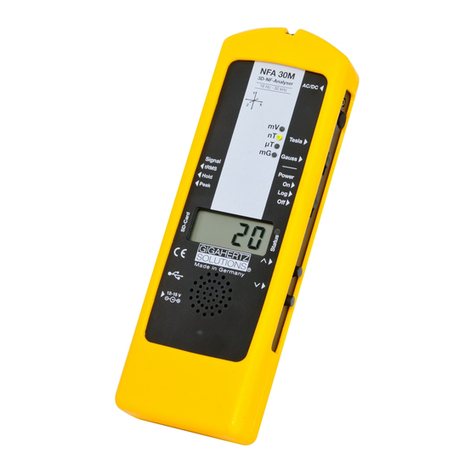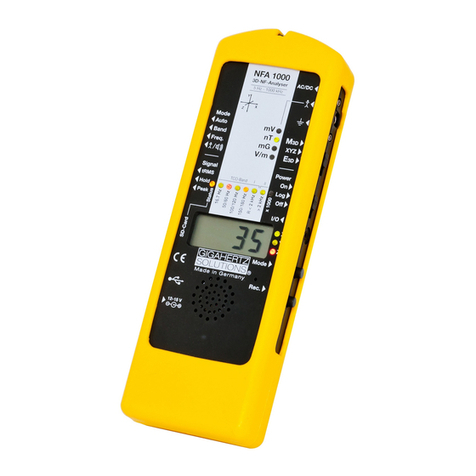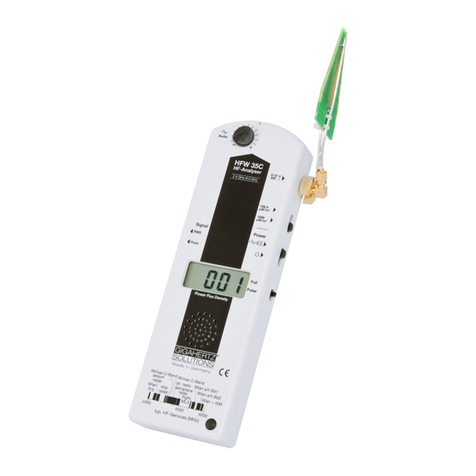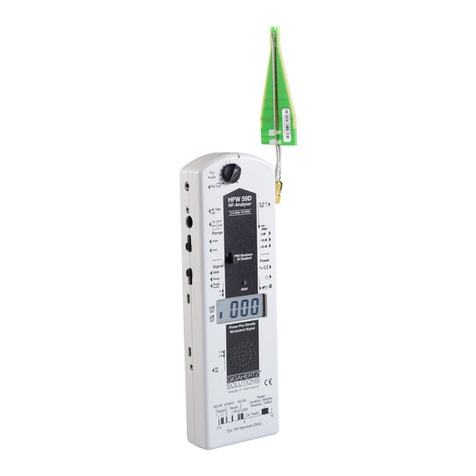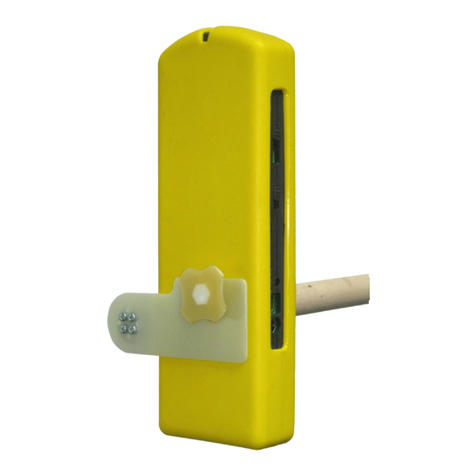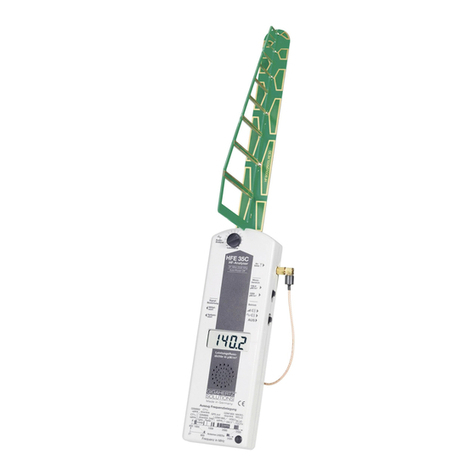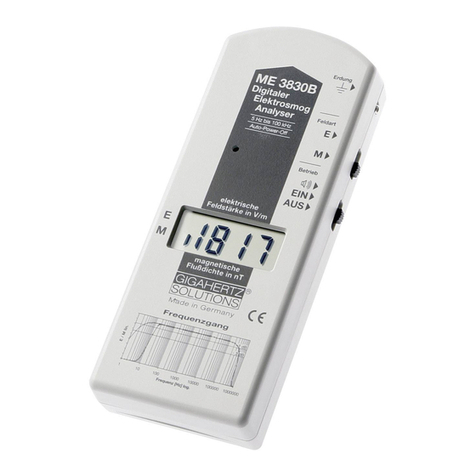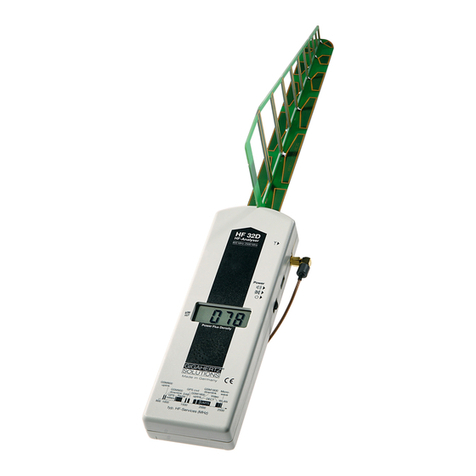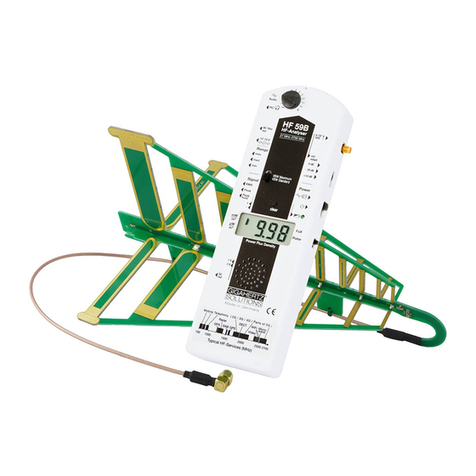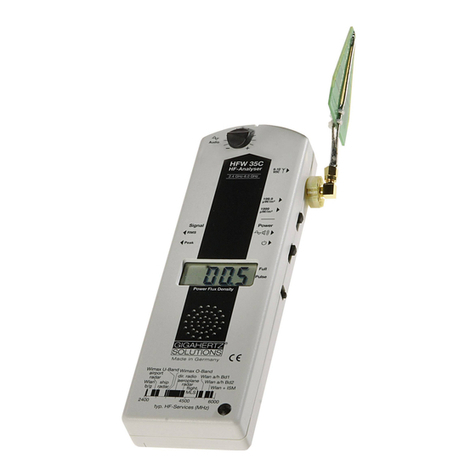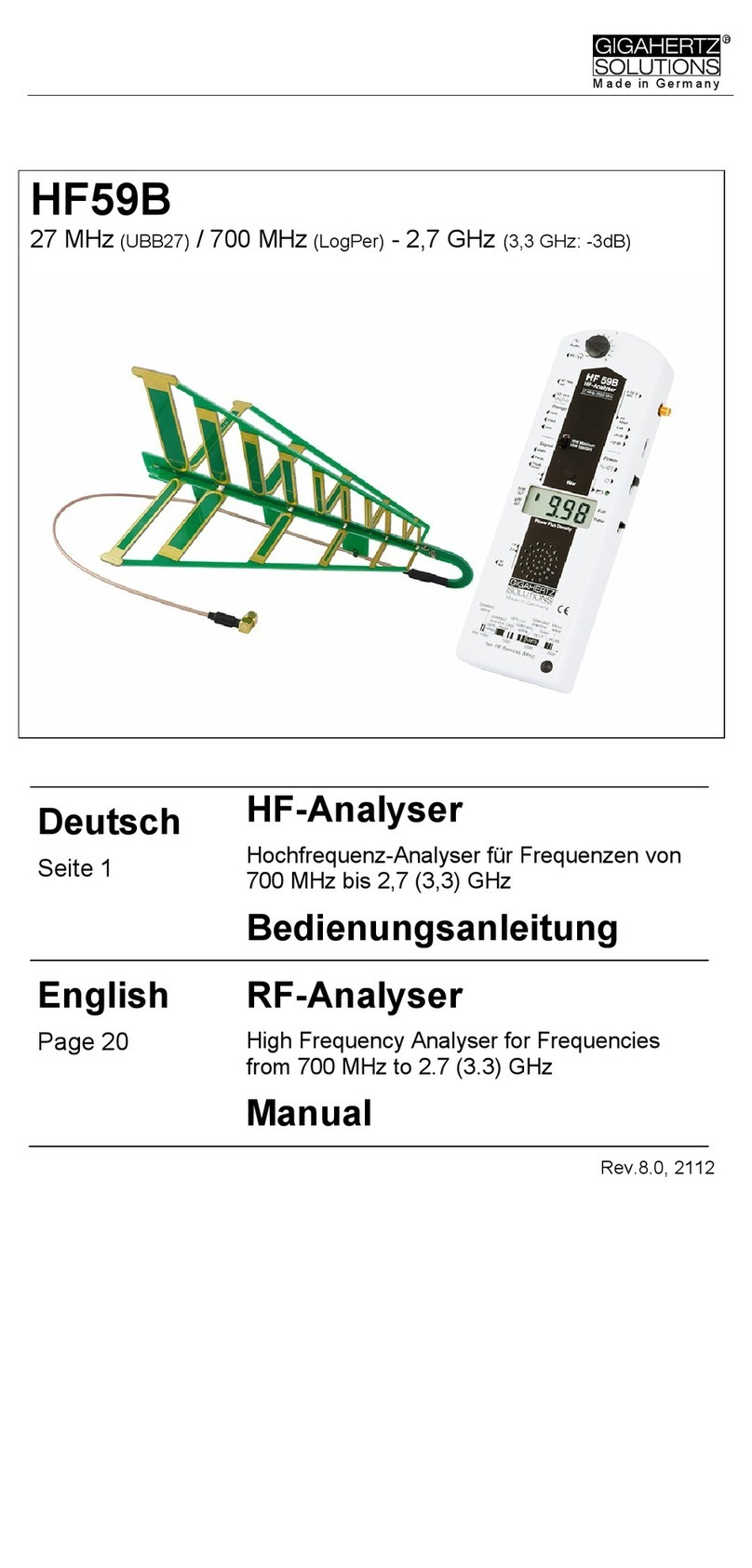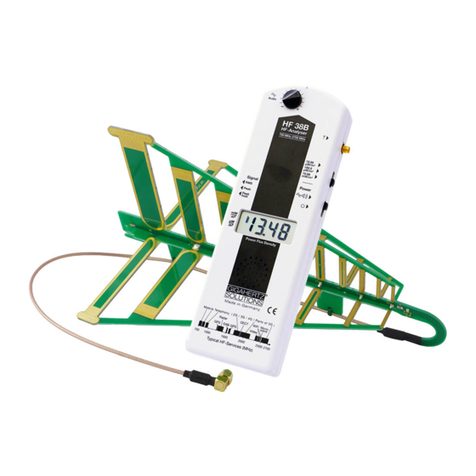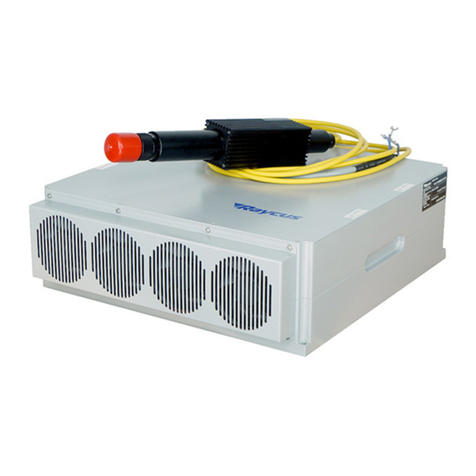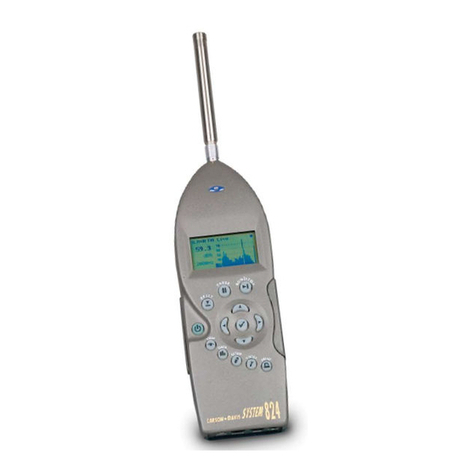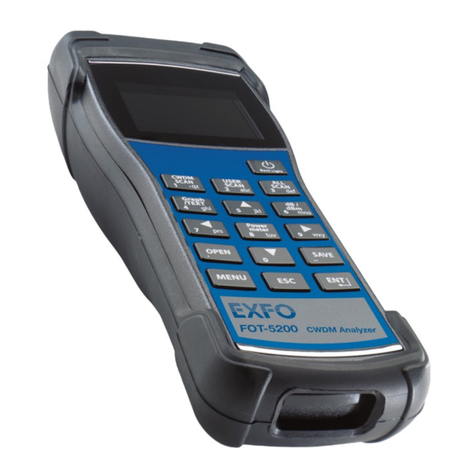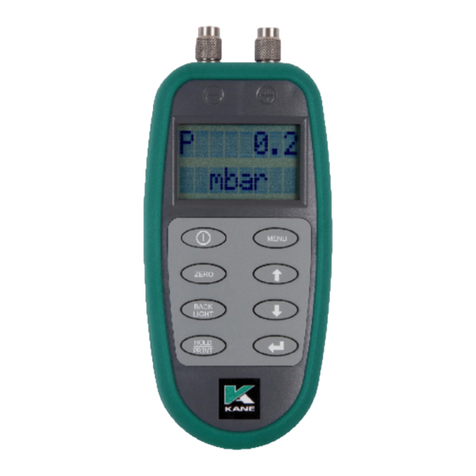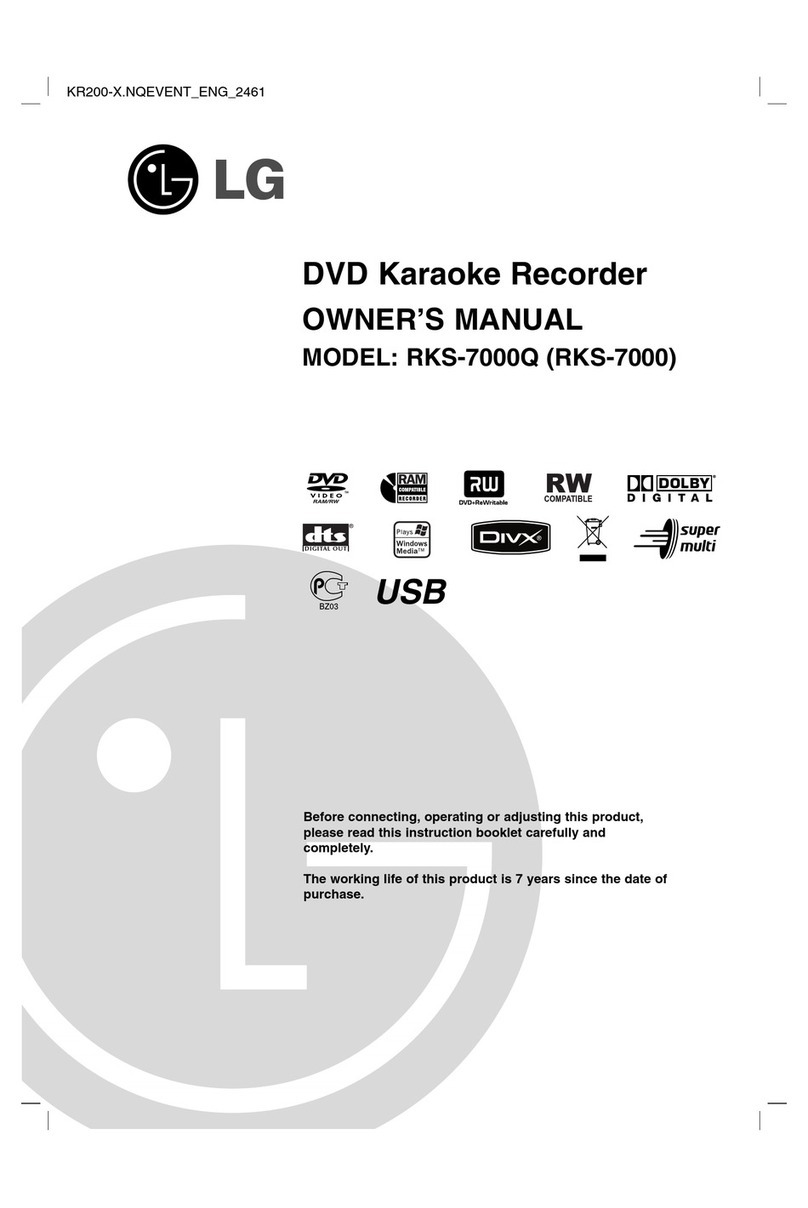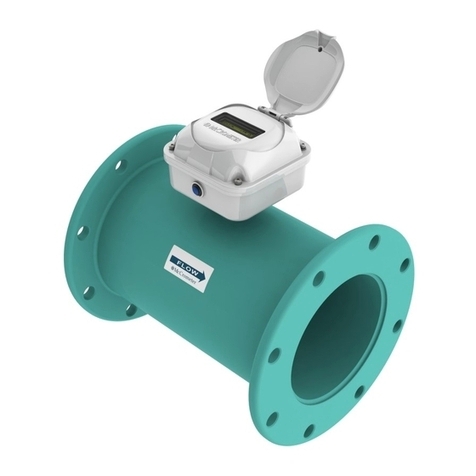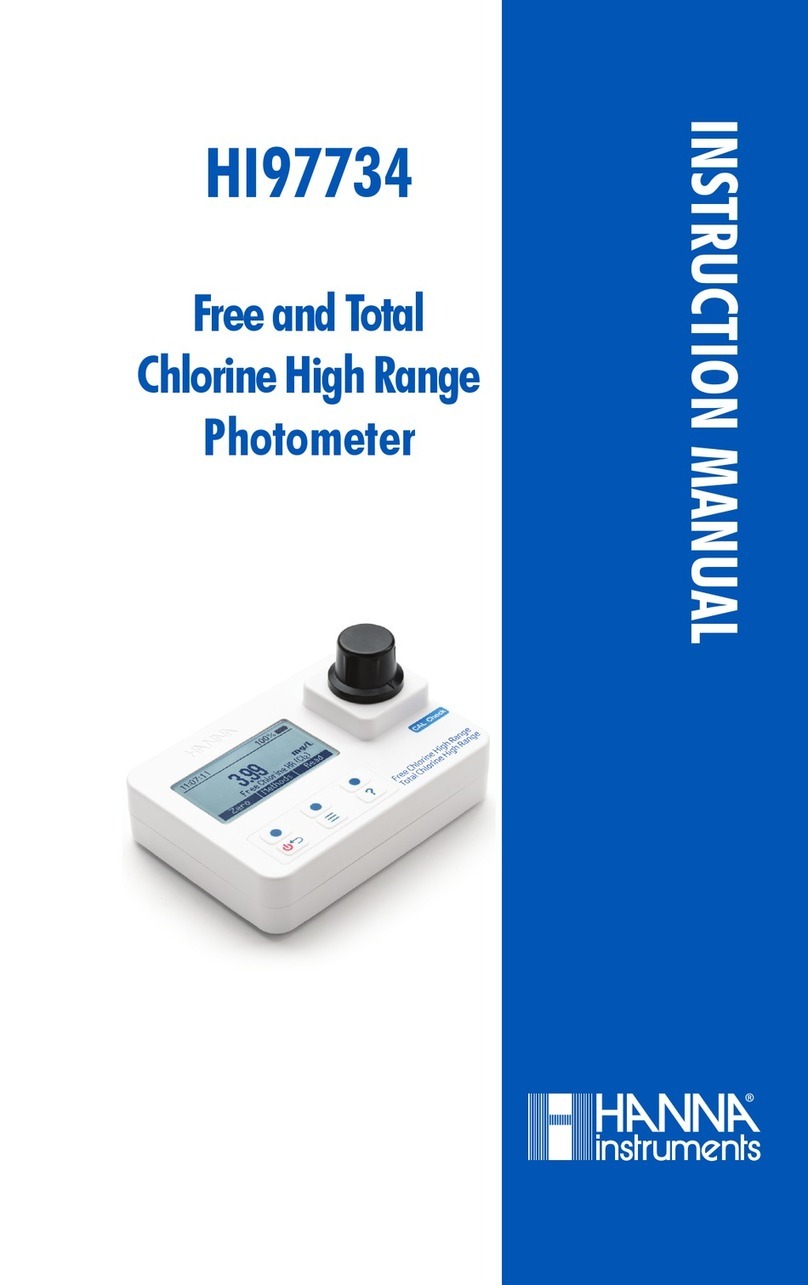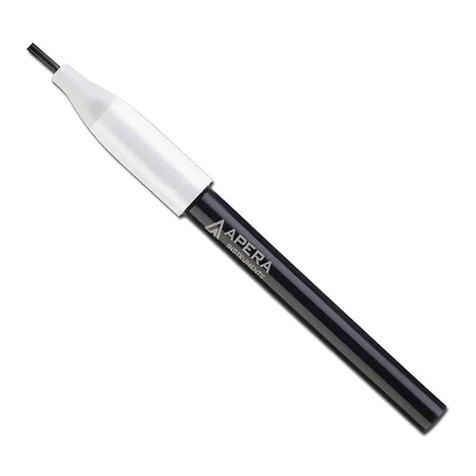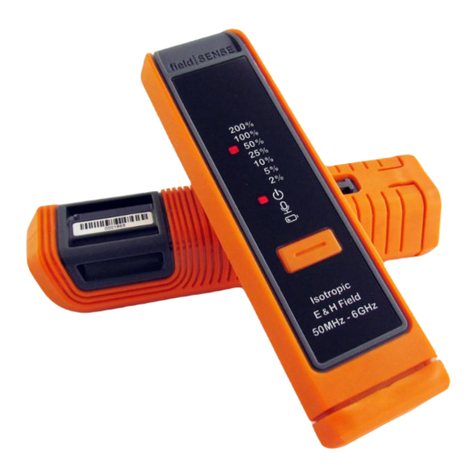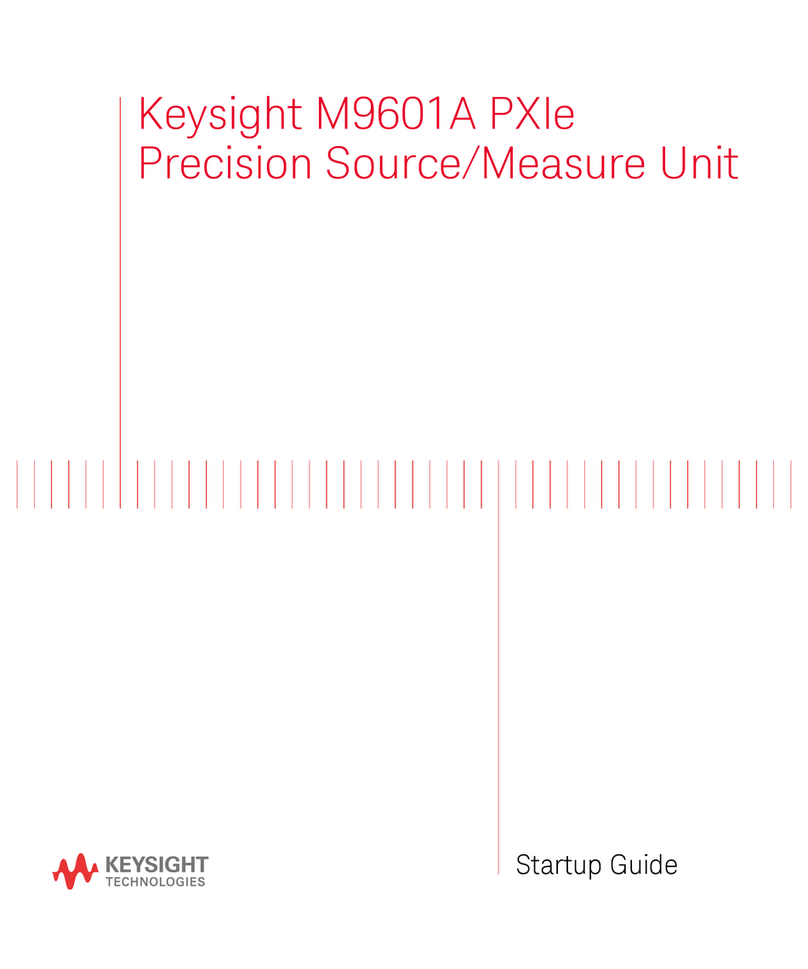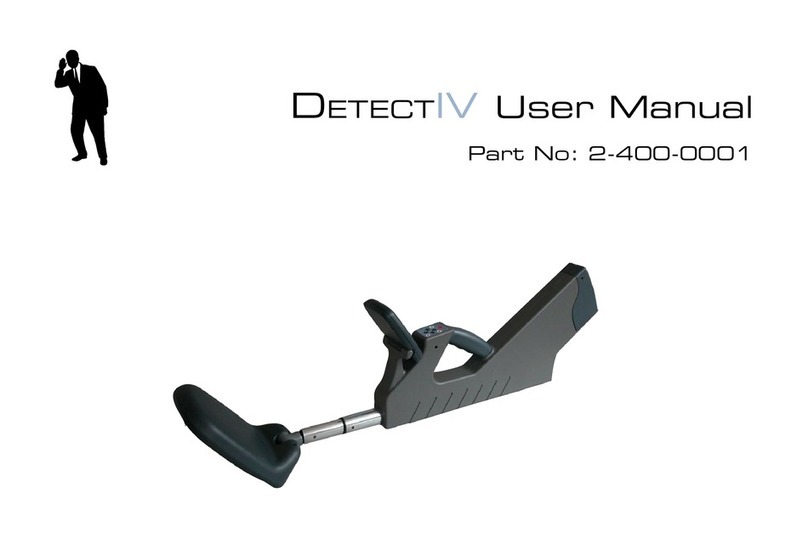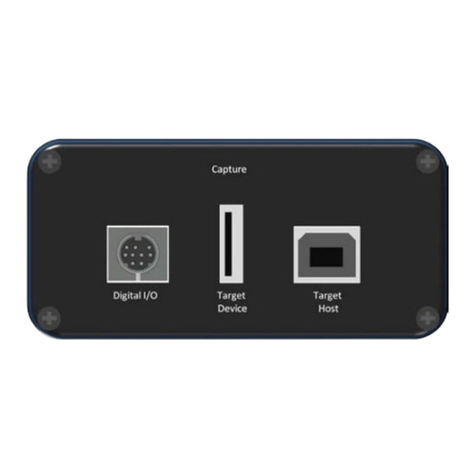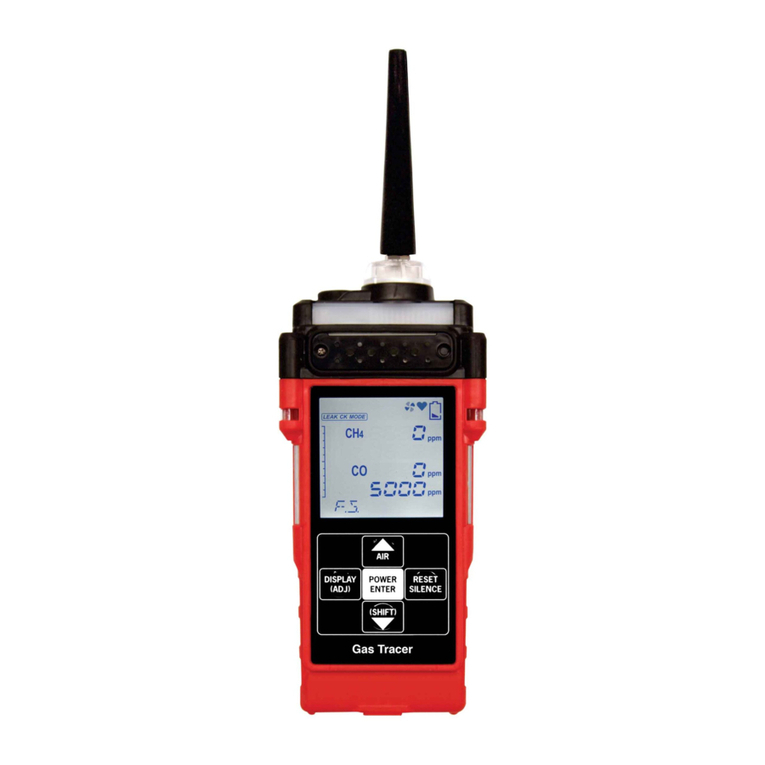
UBB27 Made in Germany
© Gigahertz Solutions GmbH 9
The UBB27 in most typically shows higher readings than a
LogPer antenna, for two reasons:
With its smaller dimensions it can show so-called “hot spots”,
highly localized areas of intense radiation due to multiple reflec-
tions etc, without “spatial averaging”. This often accounts a factor
of 2 to 4 in interior situations.
Sources in the expanded frequency band below that specified for
the LogPer antennas may contribute to the total immission.
It is calibrated to a slightly higher average readings so that the
lower edge of its specified tolerance band still never goes below
the reading of a comparative measurement with a logper-antenna
even in frequency bands where it is in its specified plus tolerance.
Measurements obtained with the UBB27 are as accurate as those
obtained from the LogPer antenna. Please Note: The latter has a
narrower tolerance band, because of a lower volatility of their fre-
quency band curve, which on the other hand is much narrower. In
addition they are much bigger and provide average power densities
over a wider area. Both can be and should be used when evaluating
the immission in a given situation. It is significant to note which
technique was used for each measurement.
“Rattling tone” for marking of un-pulsed transmitters
When using the HF59B in audio analysis mode with the UBB27
attached (The switch “Signalanteil” or “Signal” set to “Voll” or
“Full”), one will almost always hear a rattling tone. This is because
sources of un-pulsed radiation are almost always present in the
very broad frequency range of the UBB27. The loudness of it is
proportionate to the percentage of un-pulsed radiation in the total
signal received. The marking is done with a frequency of 16 Hz
(very low). An audio sample can be down-loaded as a MP3 file
from our home page.
Limits for using the RF amplifier HV10
Only the HF59B can supply enough Power for the UBB27 plus the
HV10. The battery life decreases by ~20%.
The external attenuator DG20_G3, may be used with the UBB27
plus either HFE35C or HF59B.
Accuracy
By itself, the UBB27 inaccuracy range of +/- 3 dB extends from ap-
prox. 85 MHz up to 3.3 GHz. The antenna continues to work beyond
that, but with increasing attenuation.
We state the total accuracy of our HF analyzers for the complete
assembly of analyzer plus antenna in a far field under well defined
conditions. (An “average measurement” with the complete assembly
placed on a non-conductive support). The measurement inaccura-
cies for the complete assembly are the following:
HFE35C plus UBB27 stays the same, and
HF59B plus UBB27 increases moderately to +/- 4.5 dB.
Below 85 MHz the tolerance level of the setup for the calibration
becomes predominant and limits the accuracy achievable for the
